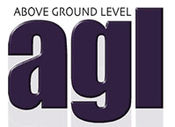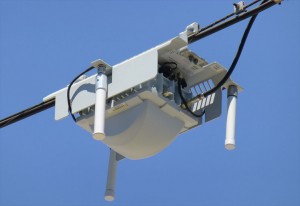 Are you in the wireless tower industry? Are you a government employee dealing with wireless matters in your jurisdication? One of the most valuable (and amazingly cost-effective) wireless conferences you can attend are those put on by AGL Magazine. The next AGL day-long conference is in Chicago on September 19th.
Are you in the wireless tower industry? Are you a government employee dealing with wireless matters in your jurisdication? One of the most valuable (and amazingly cost-effective) wireless conferences you can attend are those put on by AGL Magazine. The next AGL day-long conference is in Chicago on September 19th.
The Chicago agenda as of this writing is:
| 8:30 a.m. |
Opening Keynote –“WiFi, DAS, & Smartphones in 21st Century Real Estate” – James Carlini, Certified Infrastructure ConsultantSponsored by Amphenol GCS |
| 9:00 a.m. |
Site Acquisition: Where Will All the Wireless Go?You have all heard the statistics on wireless growth, but where will all these antennas and nodes be located? This session will teach you how to meet the zoning challenges and take advantage of the opportunities in innovative antenna siting. Stay on top of the trends in siting macrocells, microcells and DAS, whether it is a greenfield development or on rooftops or on street furniture. Our panel of experts will fill you in on the best practices in siting on federal properties, churches and schools. Bill Sills, Wilkerson Barker & Knauer Deborah Hill, Hill Law Offices Bob Stapleton, National Wireless Ventures Tim Renaud, US Cellular |
| 10:00 a.m. |
Wireless Business Trends RoundtableThis session will scrutinize the business side of the wireless industry, from tower brokerage to Wall Street to carrier class Wi-Fi. Stay up to date on the critical factors that have an impact on our industry, whether it is the latest mergers, cash infusions or LTE deployment news. You will learn where the opportunities are to increase your profits, whether you own towers or integrate wireless systems. Pat Tant, Solution Seven Clayton Funk, Media Venture Partners Ray Cagle, Clearwave |
| 11:00 a.m. |
LTE and the Art of Achieving and Maintaining Tower IntegrityWith LTE systems rolling out at a furious pace, can proper equipment installations keep up? This session will teach you a wide range of best practices for deploying equipment on towers and keeping them in working order. Plus, keys for keeping tower climbers safe. Dave Anthony, Shenandoah Tower Services Greg Toback, Anritsu John Celentano, Tessco Scott Bohaychyk, Clearfield Brandon Champman, Valmont Site Pro1 |
| 12:00 p.m. |
Join us for Keynote Luncheon withJonathan Adelstein, President & Chief Executive Officer of PCIA – The Wireless Infrastructure Association Co Sponsored by Concordia Group Ltd & Phillips Lytle
|
| 1:00pm | NATE PRESENTATIONWith Todd Schlekeway, Executive Director of NATE |
| 1:15 p.m |
Small Cell, DAS, Wi-Fi – the New Wireless FrontierWhile it goes by different names – metrocell, picocell, microcell, DAS node and carrier-grade Wi-Fi – the result is the same, increased capacity and coverage enhancement. You will learn the latest technology trends in the deployment of multiple, smaller coverage area nodes. Additionally, you will learn the market drivers. All of which are critical to playing in this quickly evolving space. Doug Dimitroff, Phillips Lytle Jeffery Funderburg, AT&T Dennis Rigney, SOLiD North America Mark Kerschner, TE Connectivity John Gilbert, Rudin Management Company,Inc. |
| 2:15 p.m. |
Break Sponsored by LCC LAW |
| 2:30 p.m. |
Vertical Markets: Fertile Ground for Small-cell TechnologyThrough case studies and analysis, learn about niche markets where small-cell technology will thrive. The healthcare space, hospitality, campuses and stadiums are high-profile ventures that feed our growing need for smart phones. Come hear how to overcome the challenges in these complex yet most lucrative environments. Ali Sar, 123eWireless Lorna Slott, AT&T Greg Najjar, Sprint Bob Butchko, RF Connect |
| 3:30 p.m. |
Closing/AGL announcements |
You can register for the AGL conference (for only $95…yes Ninety-five bucks) here: http://agl-mag.com/agl-midwest-regional-conference/
To add icing to the cake, the day before there is an optional two hour “Tower Tech Session.” Here’s the registration link to the Tower Tech Session: http://agl-mag.com/tower-tech-training-chicago/
My recommendation: Just Say Yes!
Jonathan



